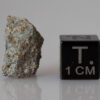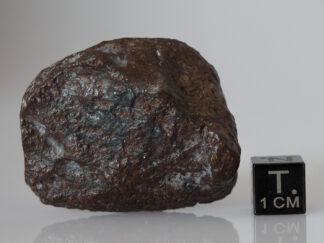Description
2.44g fragment of this rare meteorite. Sold in a box with label/certificate of authenticity.
*** If you buy from the € zone, please use € currency on my website and for payment. This way, you’ll avoid paying Paypal conversion fees ! ***
History (c) P. M. Pelé : On July 24, 1790, around 9:30 p.m., Mr. De Carrit-Barbotan and Mr. Baudin were walking through the courtyard of the Castle of Mormès. They observed suddenly an intense glow. Raising their heads, they saw a fireball heading south to north, according to their report (although this trajectory is questionable). The meteor broke up into several glowing fragments. Three minutes later, a violent detonation was heard. The object fragmented near Julliac and a number of stones fell over a fairly large area. Stones fell in the moors, in the forests, in some farmyards, but without causing any known damage to houses; according to the Marquis de Drée, a stone might have killed a shepherd and cattle, but there is no proof. The phenomenon was observed as far away as Limoges. The strewnfield of the Barbotan meteorite fall is extensive, as it goes from Losse (Landes), Mézin (Lot-et-Garonne), Eauze (Gers) to Créon d’Armagnac (Landes), according to reports. It is impossible to know the total mass of this fall, but it is certainly more than 50 kg, and is probably close to 100 kg. Many stones weighed from 2 to 4 pounds (1 to 2 kilograms). Several stones weighed from 18 to 20 pounds (9 to 10 kg). The largest is said to have weighed 45 kg.
Places with reported stones:
Eauze: 43°51’44.17″N, 0° 6’1.28″E
Cazaubon: 43°56’2.62″N, 0° 4’14.99″W
Créon d’Armagnac: 43°59’40.08″N, 0° 6’20.33″W
Mézin: 44° 3’22.29″N, 0°15’23.20″E
Lagrange: 43°58’26.93″N, 0° 6’25.71″W
Losse : 44° 6’35.42″N, 0° 6’12.04″W










